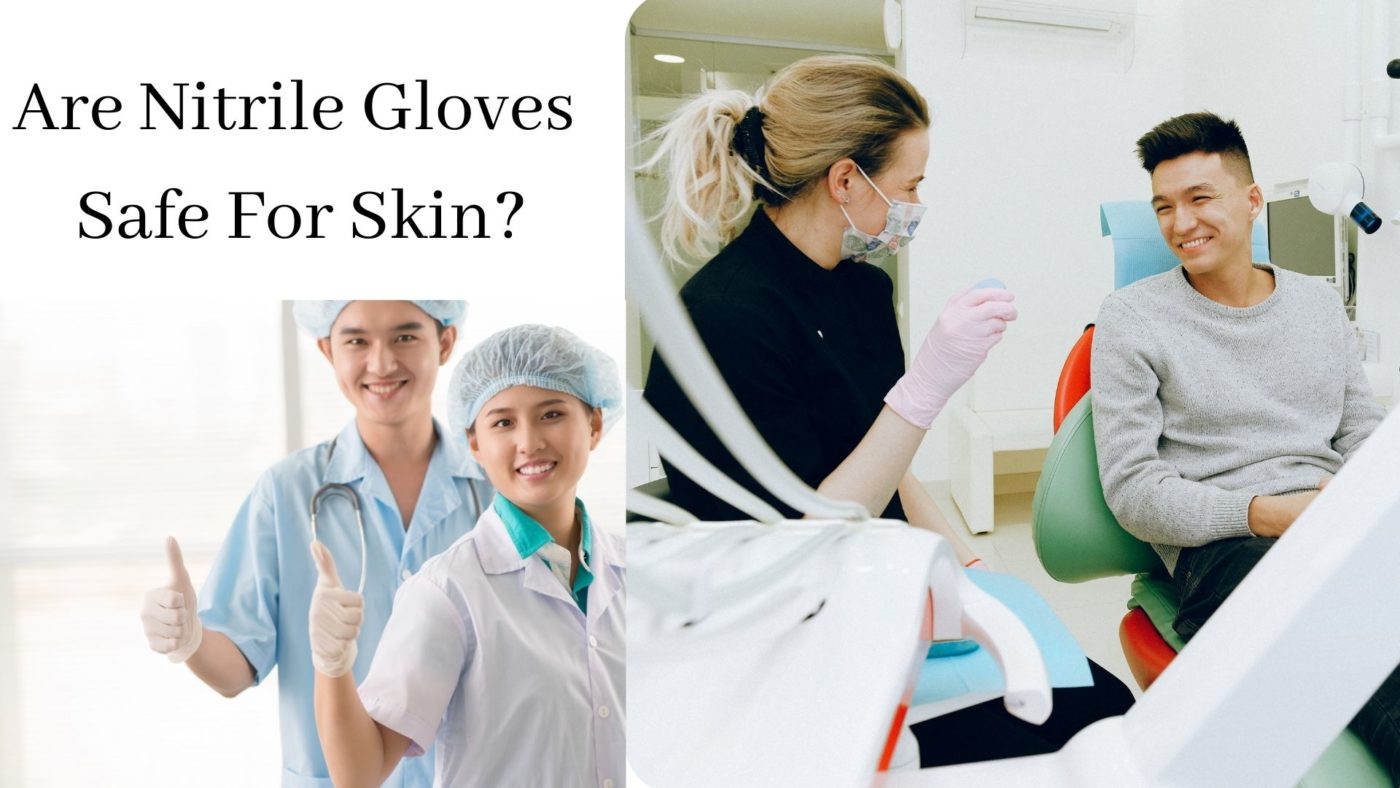No products in the cart.
Gloves
Are Nitrile Gloves Safe For Skin?
The word Glove is derived from Old English Glof, meaning a garment covering the whole hand. Gloves have been used by mankind for ages for protection or cosmesis. Gloves are always meant to act as barriers between the hand and outside the working environment. For a health care worker, an ineffective barrier puts them at risk of blood-borne infection and the patient with the risk of contamination with the micro-organisms present in hand. Similarly, the industrial workers need gloves to protect the hand against various chemicals, solvents and against pricking or penetrating injuries.
There are three kinds of gloves currently used: rubber gloves (latex gloves), Vinyl gloves, and nitrile gloves.
What are the nitrile gloves?
Nitrile gloves Canada are alternative to natural latex gloves. CanGardCare.com gloves are made up of synthetic latex. They have been used as physical and chemical barriers to chemical and biological hazards by millions of healthcare workers and industry workers.1 These gloves are latex-free, and that’s why it has been used exclusively in patients with latex allergy. There are various studies performed by researchers regarding the feasibility of the use of Nitrile gloves. These studies have provided the impetus for the development of protection measures in the workplace and have suggested certification of disposable nitrile gloves in the workplace.2
What molecules make up the nitrile gloves?
Nitrile gloves are a combination of elements like Acrylonitrile, Butaideno, Carboxylic acid, and Zinc Oxide.
- Acrylonitrile enhances the chemical resistance property of the gloves.
- Butadiene increases the softness and flexibility of the gloves.
- Carboxylic acid, along with Zinc Oxide, increases the gloves’ mechanical strength, making them less vulnerable to tear and puncture.
Formulations of Nitrile gloves:
Several formulations (types) of Nitrile gloves are:
- Low modulus gloves.
- Medical grade.
- Low-filler gloves.
- Cleanroom gloves.
What are the special features of Nitrile gloves?
- The nitrile gloves are synthetic latex and have very few rare chances of an allergic reaction.
- These gloves have very high chemical resistance when compared to Vinyl gloves.3
- These gloves are flexible.
- Suitable for all skin types.
- Comfort and fit- These gloves mold about the hand and provides a proper fit.
- Best Touch Sensitivity.
- Suitable for prolonged use.
- High protection against infectious agents.
- Better chemical resistance to Petroleum products.
- Excellent shelf life.
I am a laborer by occupation. How can this glove help me?
Companies in different densities manufacture nitrile gloves. These gloves can vary from very thin to very thick. Very thick gloves provide excellent results for use in heavy labor involving physical risk. These gloves are puncture resistant and are lighter and cooler than other gloves like latex or vinyl gloves, and they prove to be beneficial for heavy labors.
Are these gloves made only for heavy laborers?
These gloves, although they are most suited for heavy laborers, they have been used extensively by medical staff like Health Care workers and workers in cytostatic units (those who work in Chemotherapy units) as well as the workers in the chemical industries.
These gloves provide barrier protection, chemical and solvent resistance apart from puncture resistance. These features make them suitable for use by healthcare workers and chemical workers.
I have heard so much about latex gloves, aren’t they better?
Latex gloves are also a popular choice of protection in the healthcare, medical and industrial workplace. These gloves are comfortable, have a high level of touch sensitivity, and can be worn for long periods due to their natural materials.
However, popularity does not necessarily mean safety. Latex gloves are more vulnerable to puncture, wear and tear, and chemical penetration. Furthermore, these gloves can cause skin irritation as well as allergic reactions in severe cases.
Are vinyl gloves any better?
Vinyl gloves have high in-use leakage rates. This can potentially cause compromised barrier protection and poses the risk of contamination to the workers (healthcare and industrial workers). High in-use leakage also makes these gloves less durable.4
Are there any concerns about nitrile gloves?
These gloves are synthetic latex; that’s why these gloves have more expensive production costs than Latex. Apart from this, there is no known disadvantage of Nitrile gloves.
Which Type of Nitrile Glove is Better?
Among Low modulus gloves, Medical grade, Low-filler, and Cleanroom gloves, the Cleanroom gloves had the highest percentage of leaks when the researchers performed the water-leak test. These leaks were observed in the finger and thumb region. Low-modulus and medical-grade type of Nitrile gloves has the best performance with the lowest percentage of leaks. These are the gloves that are recommended for general use as well as medical use.
References:
1. Phalen, RN, Wong WK. Integrity of disposable nitrile exam gloves exposed to simulated movement. Journal of occupational and environmental hygiene. 2011 Apr 19;8(5):289-99.
2. Phalen, Robert N., and Weng Kee Wong. “Chemical resistance of disposable nitrile gloves exposed to simulated movement.” Journal of occupational and environmental hygiene 9, no. 11 (2012): 630-639.
3. Phalen RN, Le T, Wong WK. Changes in chemical permeation of disposable latex, nitrile, and vinyl gloves exposed to simulated movement. Journal of occupational and environmental hygiene. 2014 Nov 2;11(11):716-21.
4. Rego A, Roley L. In-use barrier integrity of gloves: latex and nitrile superior to vinyl. American journal of infection control. 1999 Oct 1;27(5):405-10.

